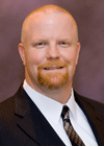As we begin a new year, the economy may still be causing employers to examine ways to cut costs, and many times, safety budgets may be the primary avenues they take. Safety experts say many companies see safety as an overhead cost; but eye injuries alone account for more than $300 million per year, according to OSHA. This figure includes medical expenses, worker compensation, and lost production time.
January is National Eyecare Month. Once good vision is lost, it can’t be easily replaced. Prevent Blindness America reports that an estimated 94,500 persons are treated in emergency rooms for eye injuries every year in the United States. The Bureau of Labor Statistics estimates that around 2,000 people suffer eye injury at work each day. That’s one in every ten, leading to at least one or more missed workdays. The correct eye protection could either prevent 90% of those injuries or lessen the severity of damage to the eyes.
Employers must furnish personal protective equipment that matches the particular hazards of the job. Protective Safety goggles, safety glasses, sideshields, faceshields, and full-face respirators are designed to protect the eyes from impact, flying objects, dust, tools, chemicals, radiation, and many other hazards. Companies must assess eye safety dangers and eliminate hazards before employees begin their work. Employees should be trained to know that they should wear safety eyewear and other protective equipment at all times that there is risk of injury.
Safety lens may be made of the following materials that meet or exceed the requirements for protecting the eyes:
- Polycarbonate lens: Protect against splatter, are not likely to fog; stronger than glass or plastic, have higher impact resistance than the others; but are not as scratch-resistant as glass.
- Plastic lens: Also lighter weight than glass, not likely to fog either, but are not as scratch-resistant as glass.
- Glass lens: are not easily scratched, and can be used around harsh chemicals. They can be made with corrective prescriptions; however, they are sometimes heavy and uncomfortable.
If a person is working with chemicals, they should wear goggles. Working near hazardous radiation, such as welding, lasers, or fiber optics requires the worker to wear special-purpose safety glasses, goggles, face shields, or welding hoods designed for that particular task. If the work area contains dust particles, flying objects, or other like hazards, safety glasses with side protection (side shields) should be worn, unless the employer feels that goggles would be safer.
The “bottom line” is the fact that although companies think they may save money by cutting down on safety budgets, they might face higher costs because of an eye injury. Prevent Blindness America estimates that the average eye injury costs a company $28,000 in medical expenses, lost time, and production slowdowns. How many of their products would the business need to sell to offset that kind of expense, after a serious workplace accident? They may feel that although accident protection is important, it may not be that urgent until something happens. Let’s hope that isn’t the case.
